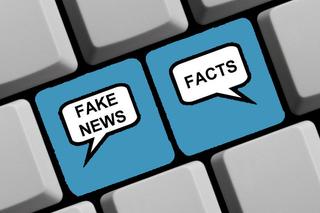
91% of 15‑Year‑Olds Can’t Separate Fact From Opinion
In the era of fake news, an inability to distinguish between the two has real-world implications.

From a global group of 32 million 15-year-olds, only 9% were able to correctly differentiate between fact and opinion in a reading task, according to the latest test results from the Programme for International Student Assessment (PISA).
PISA is a standardized test of students’ math, reading, and science skills and occurs on an international level by the Organisation for Economic Co-operation and Development (OECD). In 2018 — the results of which formed the basis of the current report — students from 79 countries and economies took this test.
The reading component tested students on their ability to find, compare, contrast, and integrate information across multiple sources of text, according to the report. “Reading is no longer mainly about extracting information; it is about constructing knowledge, thinking critically and making well-founded judgments,” the report explained. For these reasons, students must know how to differentiate between fact and opinion, which 91% of the students taking the PISA test couldn’t.
Overall, the Asian region, especially students from China and Singapore, performed better on this part of the test as compared to other participating countries.
The ability to separate between the two is an important skill to have as it shapes students’ critical and analytical skills when they read or listen to something because very often, facts and opinions are woven together, according to a teachers’ resources forum.
Missing out on the development of the ability to parse opinion from fact during childhood sets the stage for similar vulnerability in adulthood: In 2018, a study conducted by the Pew Research Center asked U.S. adults to categorize five factual statements and five opinion statements. Overall, only about one-quarter of Americans could correctly classify factual statements and only about one-third could do the same with opinion statements. Among the group surveyed, fewer older people could classify facts as compared to the younger lot and a similar pattern emerged when it came to identifying opinion.
Related on The Swaddle:
A Game That Teaches You How to Spot Fake News
This might indicate a problem because, for growing adults and adults, it becomes all the more important to be able to tell between the two for they need to constantly assess the reliability and truthfulness of the media they consume on a daily basis, especially at a time when fake news is doing the rounds. In 2019, a Microsoft survey stated Indians encountered more fake news than people elsewhere.
“Mainstream media houses, with their political biases and jingoism in prime time spotlight, have blurred the lines between fake and fact, reporting and opinion, objective and subjective,” Osama Manzar, founder and director of Digital Empowerment Foundation, wrote for The Indian Express. Adding to this is the “unprecedented levels of misinformation, lies, fables, and manufactured statistics being fed to people through their mobile devices.”
While Indians students do not typically take the PISA, other surveys suggest they are no less at risk for confusing fact and opinion. Take this survey for instance. Conducted by the non-profit Internet and Mobile Association of India (IAMAI) and data journalism portal, Factly, it showed two groups of people that were most vulnerable to believe misinformation — those above 50 and the one below 20.
Although 26.2% of Indians felt that the onus to contain the spread of fake information should fall on the media itself, it also becomes an individual’s responsibility to first, know fake from fact and fact from opinion, and second, to pass it on only after that, and only if it is absolutely necessary. But from the same survey, it was evident that that was not the case during the time of the general elections. Over four in 10 Indians hadn’t heard of fact-checking organizations, and there was also a sharp 9% increase in family and friends spreading online risks to 29%.
“The systematic, organized way in which large amounts of misinformation is reaching the masses is leaving the public confused between right and wrong and between relevant and irrelevant. Adding fuel to the raging fire is the usual public apathy towards ‘fact-checking’ and verifying the information they are consuming,” Manzar added.
Anubhuti Matta is an associate editor with The Swaddle. When not at work, she's busy pursuing kathak, reading books on and by women in the Middle East or making dresses out of Indian prints.
Related


Golden Globe Nominations Ignore Female Directors Yet Again
